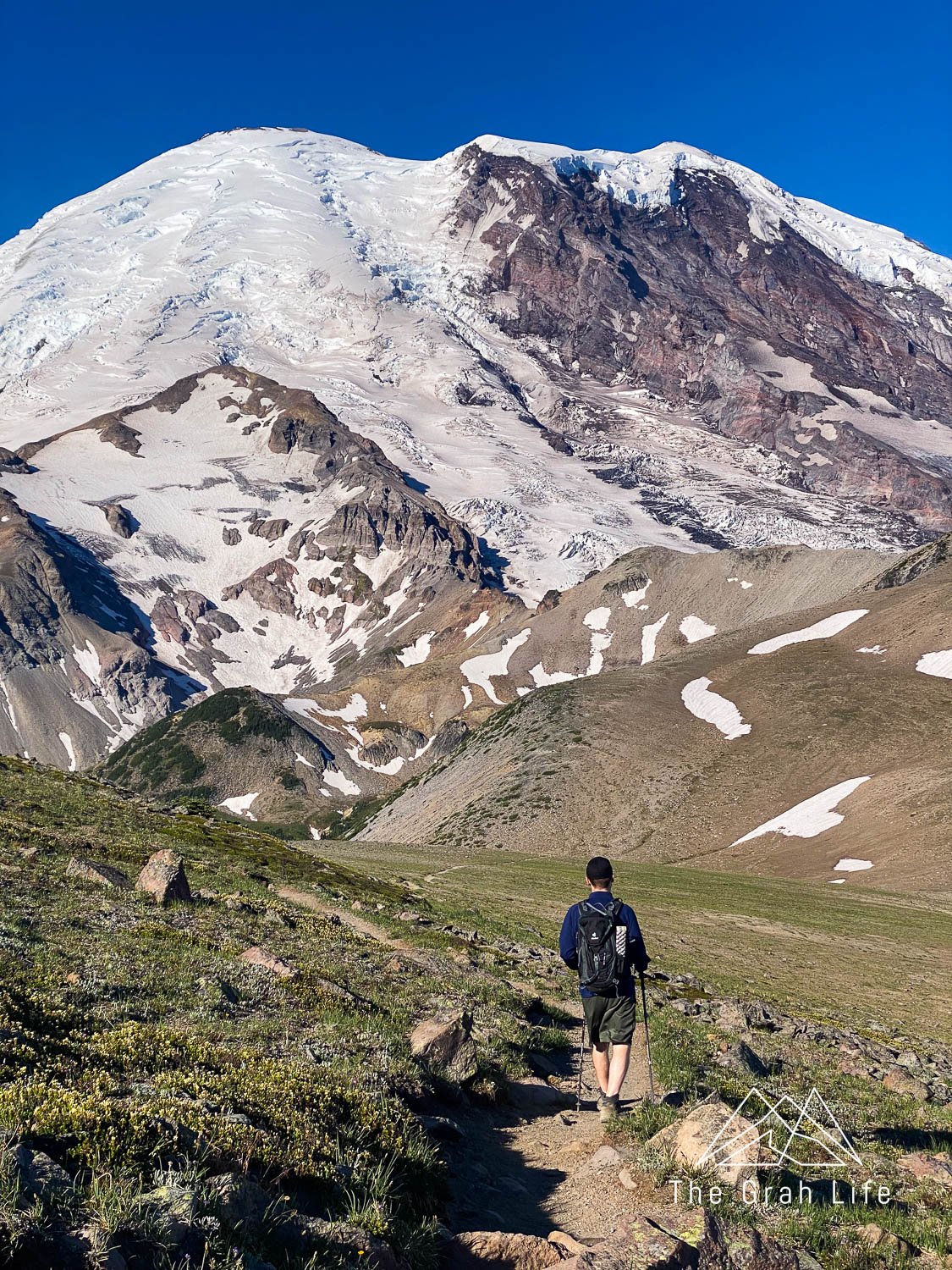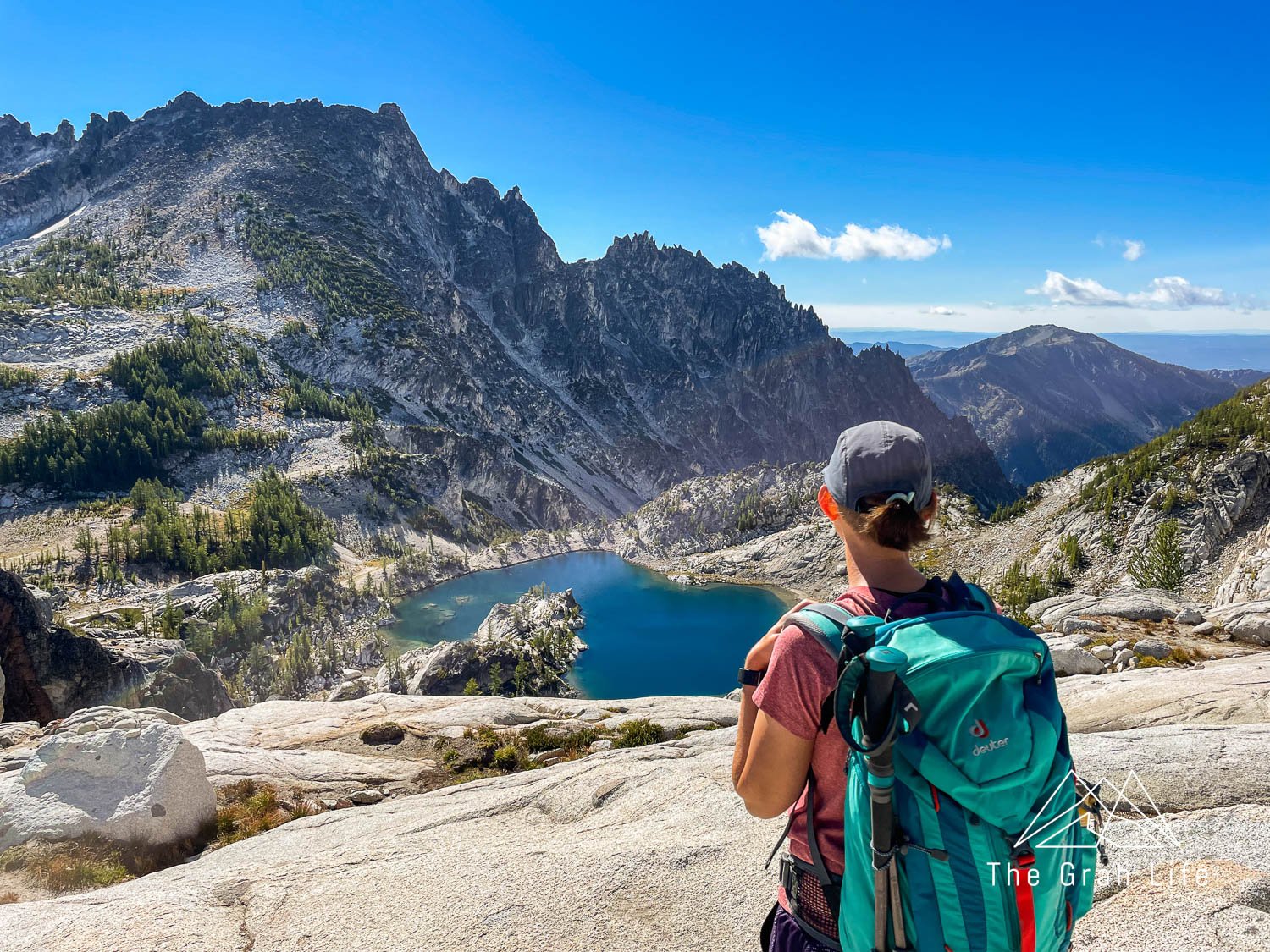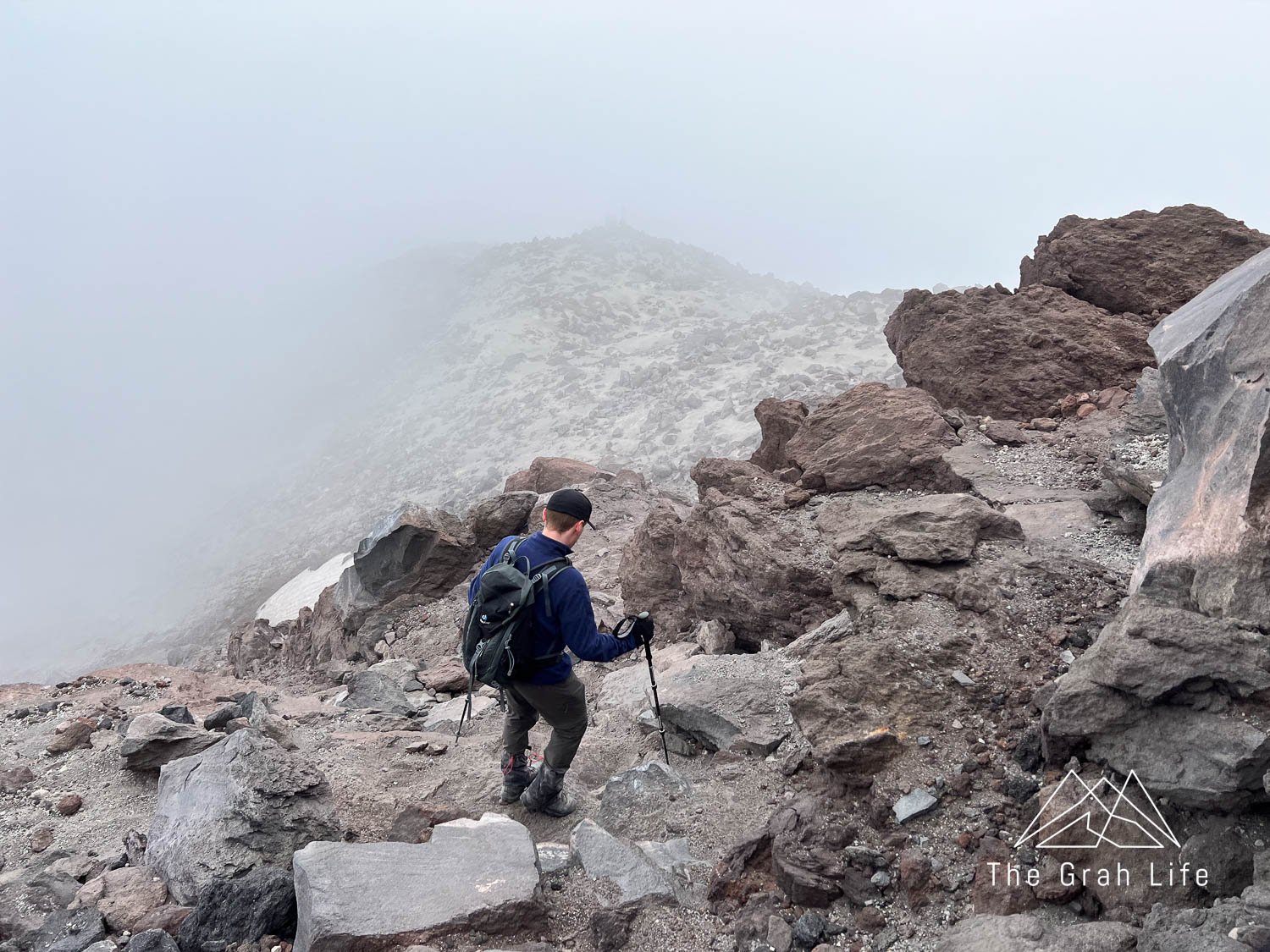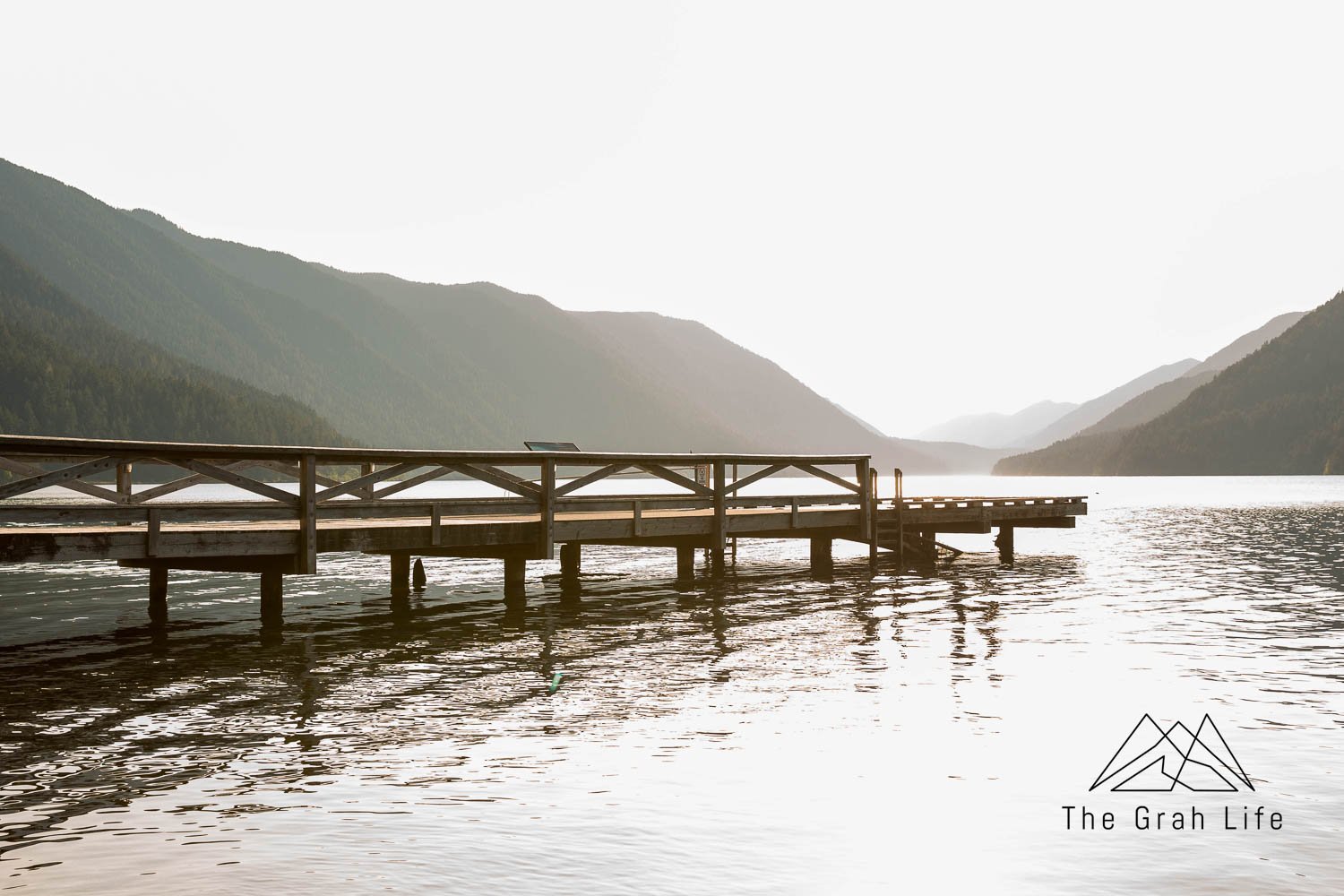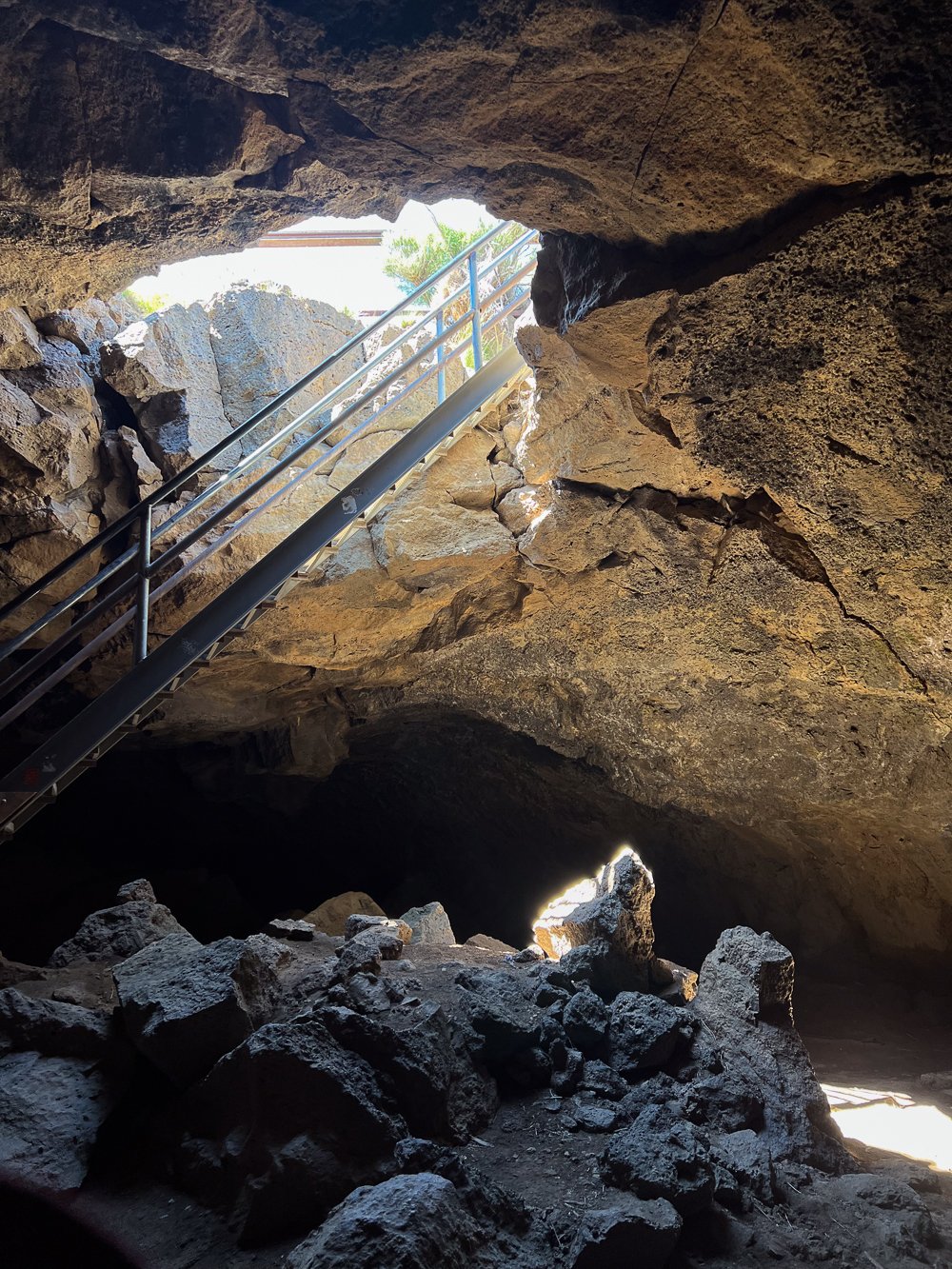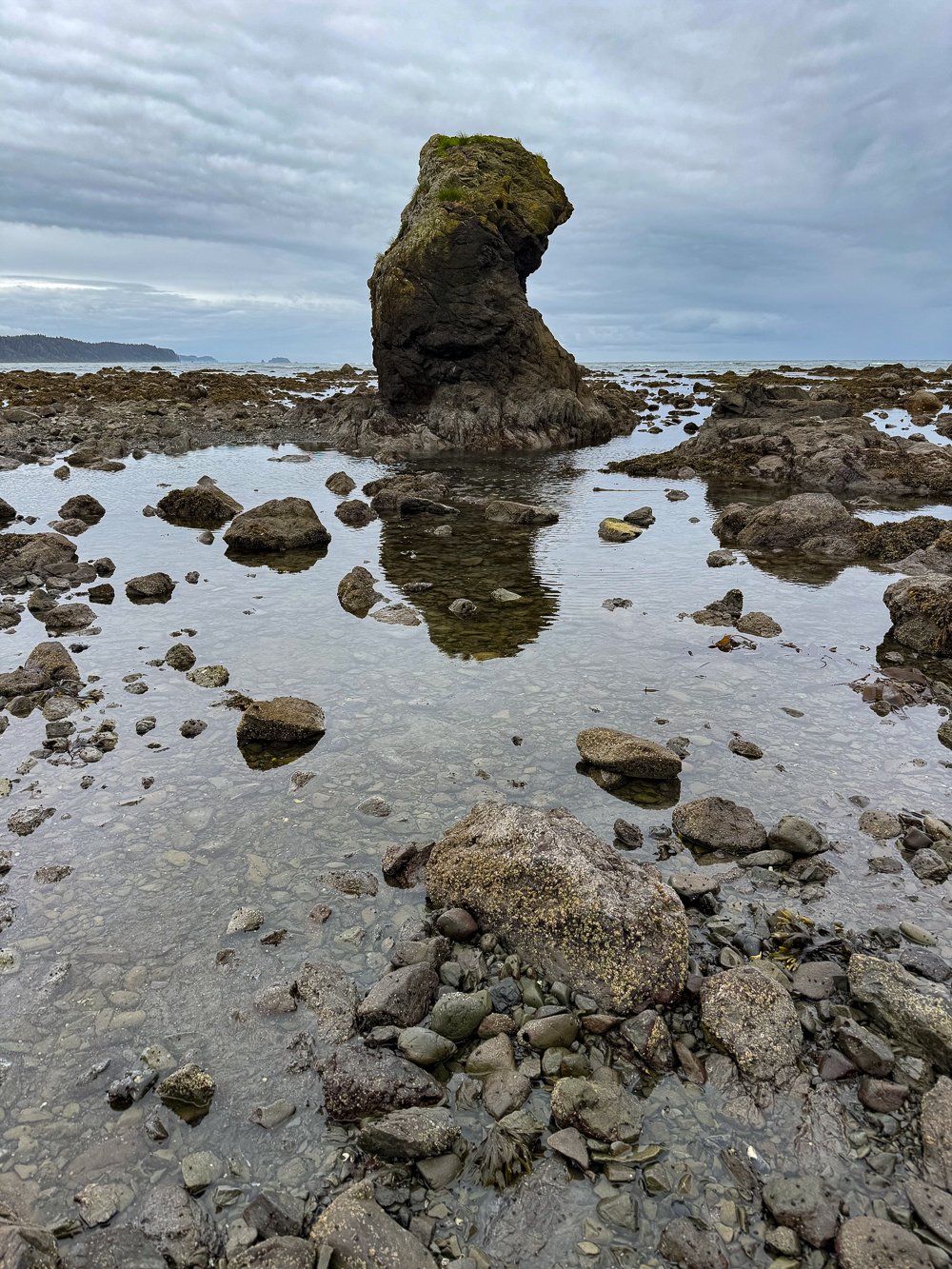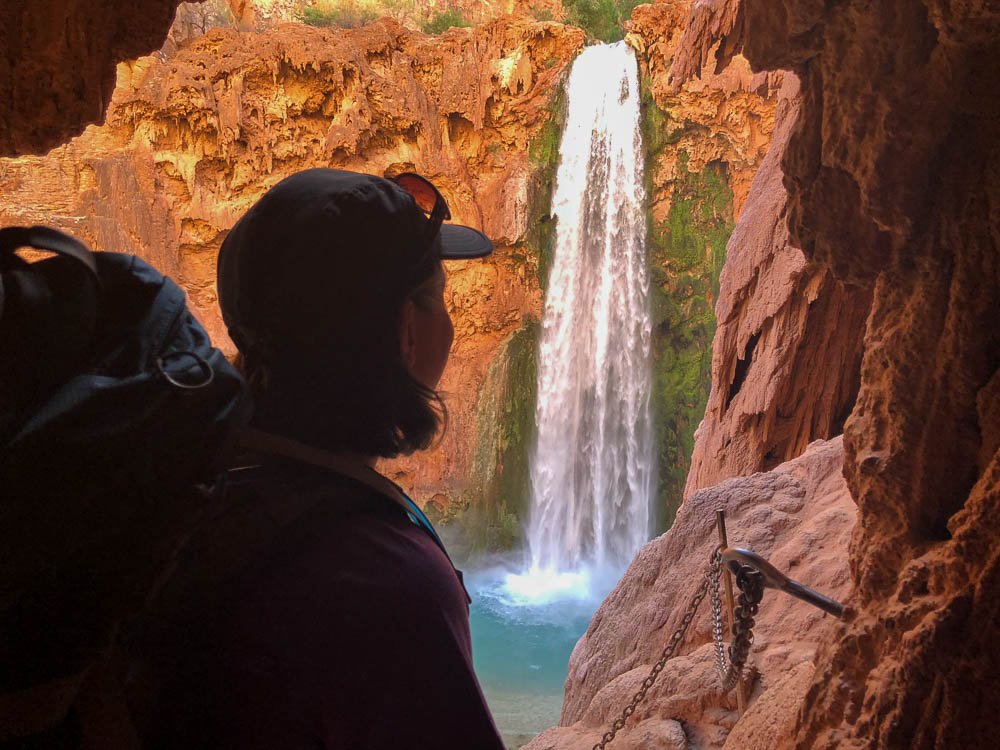Day Hiking Packing List: Our Favorite Gear
After nearly a decade of hiking, this list has our favorite gear from the must haves to the extra conveniences. It has everything you’ll need for incredible sunrise hikes to rainy days and everything in between.
If you’re new to hiking, focus on acquiring the ten essential and emergency items first, then work your way to upgrading boots, clothing, and day packs to make your hikes more comfortable. Don’t be discouraged if you don’t have the latest clothing or gear either — we’ve seen experienced mountaineers backpack 20 miles in jeans and sandals because that’s what they like. Use and wear what works for you!
If you’re an experienced hiker, we’re sure there is gear on this list that you haven’t heard of or have always been curious about. Let our trials over the years guide your gear choices.
Know what you’re looking for? Click a link below to skip to a section.
Disclosure: We’ve included affiliate links with recommended hiking gear in this post. If you click through and buy something, we’ll receive a small portion of that sale. You won’t be charged more, and we haven’t been paid by any of these retailers to share their information. These are all our genuine preferences.
If you’ll be hiking up and down steep hills, trekking poles are a must. They’ll help disperse your weight, help to keep you from getting knee injuries and help you stay steady in variable terrain. We always have our poles on us!
Clothing
Footwear
You’re going to want waterproof boots — ones that can handle walking through shallow streams, stepping in puddles, hiking in the rain, and even on snow.
Unless you’re purchasing traditional leather boots, you shouldn’t have to “break in” your boots for them to feel great. Of course, you should wear them for a couple shorter hikes to figure out if they are right for you and how tying them will work best (check out this article on ways to tie boots to minimize hot points), but they should generally feel great from the get go.
A good pair of hiking socks will prevent blisters!
Meghann loves these because they help keep pine needles out of your boots! She wears them year-round, although they aren’t water resistant and do get wet in snow.
Clothing
Moisture-wicking T-shirt (men’s/women’s)
Moisture-wicking pants (men’s/women’s) or shorts (men’s/women’s)
We always pack layers like these, which are easily taken on and off and don’t take up much space in our bags. They’re great for keeping warm on cooler days, sunrise hikes, or when you stop for a break.
These wool undergarments are odor-resistant and temperature-regulating. Choose longer briefs to help prevent chafing.
This wool bra is odor-resistant and temperature-regulating.
Outerwear
When hiking in the Pacific Northwest, it’s wise to always pack a raincoat (also known as a hard shell) no matter the season. They work as great windbreakers on summits during the summer and, of course, help to keep you dry in planned or surprise showers.
Look for raincoats with pit zips — arm pit zippers or vents — to help moderate your temperature.
No raincoat is completely waterproof, so don’t get caught up in the lingo. Purchase a water resistant/waterproof coat from a reputable brand and you should be good!
Pro tip: Do not wash your waterproof gear like other laundry. Use this two-step Nikwax detergent instead and your gear will last much longer.
Ten essentials
These items are necessities and could be responsible for saving your life. Don’t skimp here!
These emergency shelters are surprisingly cheap, effective, light, and hardly take up space.
We have the blanket style (they come in a sleeping bag style as well) because we like their versatility. They can be used to create shelter, used as a blanket, or ground cover.
We’re carrying three in our emergency kit. Two to be used as blankets and one to be used as an emergency bivy.
This size of kit is for one to two people for one to four-day outings.
Remember to bring backup batteries.
Compass and map
Water filter or water treatment tablets
When we got serious about backpacking, we invested in this personal locator beacon. It gives us peace of mind with the ability to set waypoints, text others when there is no cell service, and use the S.O.S button for emergencies.
There is a $14.95 monthly subscription fee.
We recommend slipping a few of these in your bag throughout wildfire season.
Other supplies
Neutrogena Ultra Sheer Sunscreen
This sunscreen has the safest product rating for sunscreen on the EWG’s Skin Deep guide.
Prevents chaffing
Bathroom supplies
You’re responsible for disposing of waste properly, and rules can differ based on the environment or the amount of traffic a trail gets.
When allowed, dig a cat hole 6-8 inches deep and at least 200 steps away from water sources for solid waste. Always pack out toilet paper. When cat holes aren’t allowed, use wag bags instead.
Toilet paper or a Kula Cloth
Gallon Ziploc bags for garbage
These are needed for when digging cat holes for waste is not allowed.
This is a game-changer for the women/trans/non-binary folk!! It allows you to go pee standing up. Since you only have to unzip and point the direction you want to let things flow, it’s so much more private than pulling down your pants and squatting.
Food and water
We tend to pack peanut butter and jelly sandwiches along with plenty of snacks like these:
Lara Bars (gluten-free)
Luna Bars (gluten-free)
Trail mix (gluten-free)
Archer’s Jerky (gluten-free)
Dried fruit, like mango, apricots, or apple chips (gluten-free)
Bolt Energy Chews (gluten-free)
On average, it’s suggested to pack one liter of water for every two hours you’ll be hiking, but we tend to err on the side of caution and pack a bit more, especially on hot days.
We love the Hydrapak water bladders linked above. Since we always have water handy, it helps keep our water breaks quick and we end up staying more hydrated.
We’ve tried various brands of water bladders, and these ones are the easiest to clean since they flip inside out.
Seasonal gear:
Hot weather
Long sleeve quick dry sun shirts (men’s/women’s)
Neutrogena Ultra Sheer Sunscreen
This sunscreen has the safest product rating for sunscreen on the EWG’s Skin Deep guide.
Salt pills (caffeinated/noncaffeinated)
You always need to replace salts and electrolytes you sweat out, and this is especially hard to do just by eating snacks and drinking water alone on hot days, so we supplement with these salt pills.
These are nice to have if it’s dusty.
Trekking sandals (men’s/women’s)
Great for water crossings and swimming!
One large towel dries both of us off.
Choose the length of snowshoes that will accommodate your weight, including pack weight.
These snowshoes have sharp, jagged edges that allow you to walk on slopes without slipping. Cheaper, plastic snowshoes have slippery tubes on their edges instead – avoid these!
These snowshoes have heel lifts on the back to make walking up hills a breeze.
Mosquitos and ticks
Pre-treat clothing with permethrin.
We’ve tried using 100% Deet and this essential oil blend works just as well.
These work well! Wear them around your wrists and socks and you’ll notice mosquitos keeping their distance. Unfortunately, they are a one-time-use item, and the citronella smell wears off after a few hours.
These work okay. We found them to be most useful when put on the underside of our sun hats to keep bugs off our faces and necks when the bugs weren’t bad enough to warrant wearing a bug net, but still annoying.
The best way to avoid ticks is to wear long pants, stay on trails, and avoid brushing up against brush.
Sunrise and sunset hikes
Along with any seasonal gear and the ten essentials, you’ll want extra layers for any sunrise or sunset hike. Temperatures drop quickly after the sun sets, and mornings can take a long time to warm up. These are the items we always ensure we have on hand for these hikes:
Packable puffy coat (men’s/women’s)
Remember to bring backup batteries.
Hot drink
If we’re feeling fancy, we’ll bring hot coco to help us stay warm.
Use a Thermos to transport hot liquid or warm up water with a Jetboil.
Don’t forget to bring along lightweight mugs.
We aren’t coffee drinkers but Meghann’s parents love this French Press Jetboil accessory.
Search the blog for more adventures! Try searching for topics such as “camping”, “waterfalls”, or “Washington”.

